In the world of the eCommerce business, there are two juggernauts that reign supreme: Shopify and Amazon. Both eCommerce platforms have pros and cons, but which one is the best choice for your business in 2022? This article will compare Shopify Vs Amazon and help you decide which platform is right for you.
Shopify is suitable for businesses that want to make their own brand identity and have more control over their customers’ experience. Shopify also offers a wide range of features and plugins to make your own store more efficient.
On the other hand, Amazon is suitable for businesses that want to tap into the already massive customer base that Amazon has.
You can also integrate these two platforms to work together.
So, let’s have a look at our research of Shopify Vs Amazon:
Shopify & Amazon: What are they?
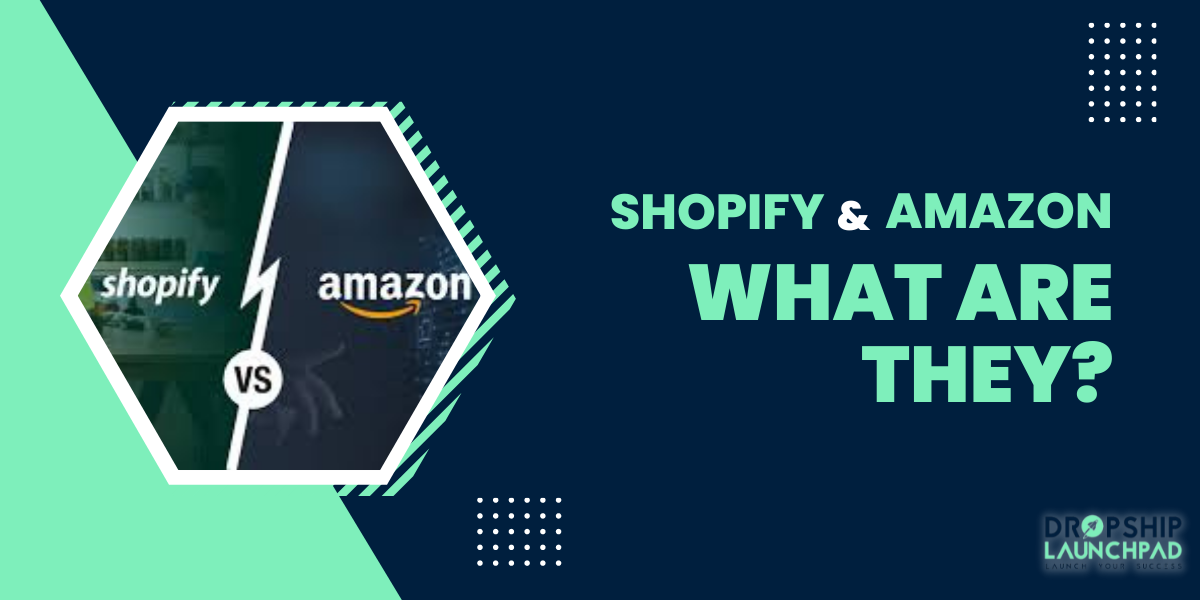
Shopify is a leading eCommerce platform for small ecommerce businesses. The Shopify platform is simple to navigate, has a low barrier to entry, and provides a plethora of features, applications, customization options, free and paid themes. You can sell physical and digital products on the Shopify store, and the platform also supports third-party integrations. For details read How does Shopify Work: Essential Information for 2022
Amazon
Amazon is the world’s largest online marketplace. Amazon sells everything from books and electronics to clothes and grocery items. The platform also offers third-party sellers the opportunity to sell their products on Amazon.
Difference between Shopify and Amazon
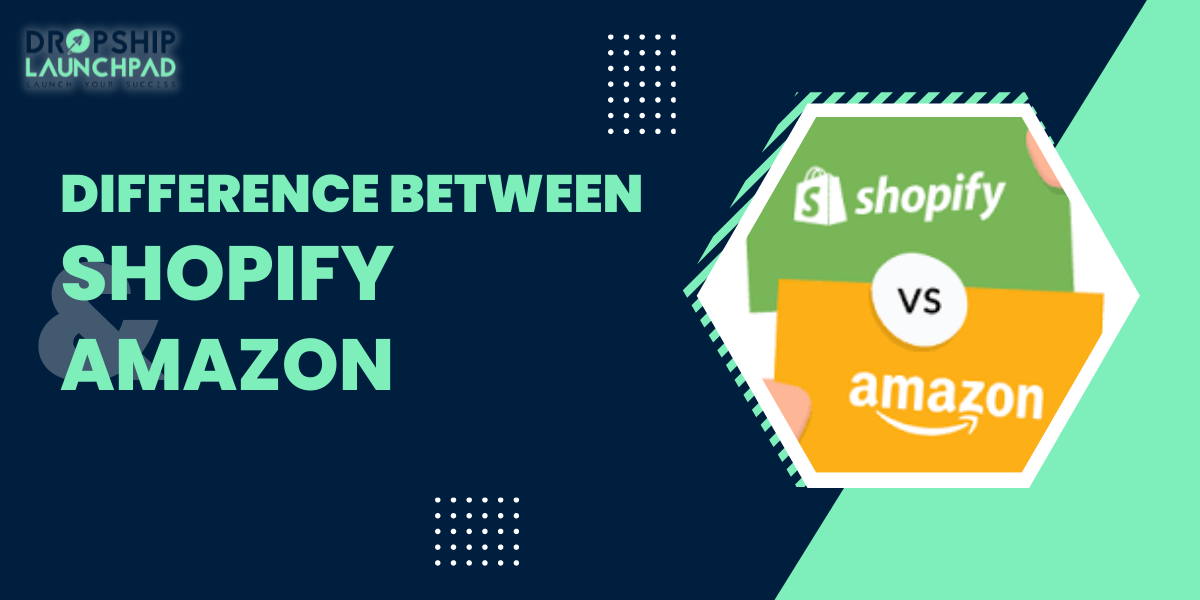
- The main difference between Shopify and Amazon is that Shopify is a platform that enables entrepreneurs to build their own online stores, while Amazon is like a supermall that allows you to sell your products. It’s not an online store builder. Online sellers just need to create an account on the Amazon marketplace to sell their products.
- Shopify is ideal for businesses starting and want more control over their branding and customer experience.
- On the other hand, Amazon is better suited for businesses that are looking to scale quickly, have a large selection of products, or want to take advantage of Amazon’s 310 million customer base.
How do Shopify and Amazon differ in terms of eCommerce features?
Shopify offers a wide range of eCommerce features suitable for businesses of all sizes. Shopify also allows you to customize your store’s design and add third-party integrations.
On the other hand, Amazon has a limited number of eCommerce features. However, Amazon does offer some unique features, such as Amazon Prime and Amazon Fulfillment.
Shopify Vs Amazon: Cons and Pros
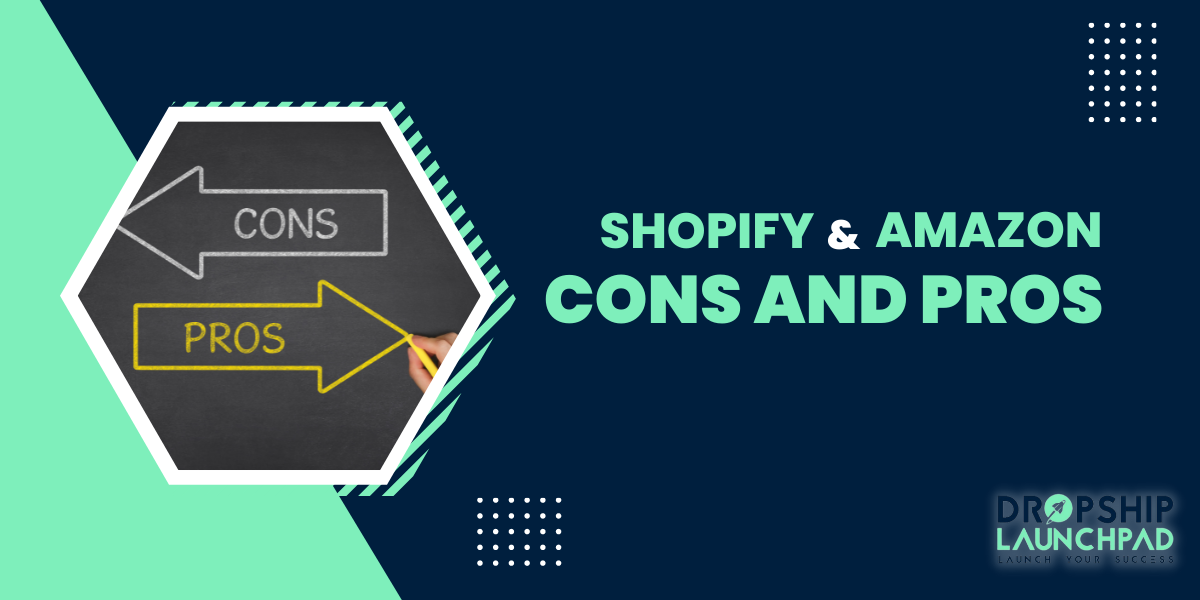
Shopify Pros
- Anyone can easily create own eCommerce website.
- Extensive features and customization options.
- Shopify has no monthly listing limits.
- Shopify app store has more than 6600 apps.
- You are in control of your branding and customer experience.
Shopify Cons
- Shopify’s transaction fees can be high for businesses with a low average order value. But if you use Shopify payment, you can avoid these fees.
- Shopify can be more expensive than Amazon, mainly if you use many third-party apps.
Amazon Pros
- Amazon is the world’s largest online marketplace, with 310 million active customers.
- It offers third-party sellers the opportunity to reach a broad audience.
- Also Amazon has a fulfillment service that can save you time and money.
Amazon Cons
- Selling on Amazon can be competitive, mainly if you are selling in a popular category.
- Amazon doesn’t offer as much control over branding and customer experience.
How do Shopify and Amazon differ in terms of pricing?
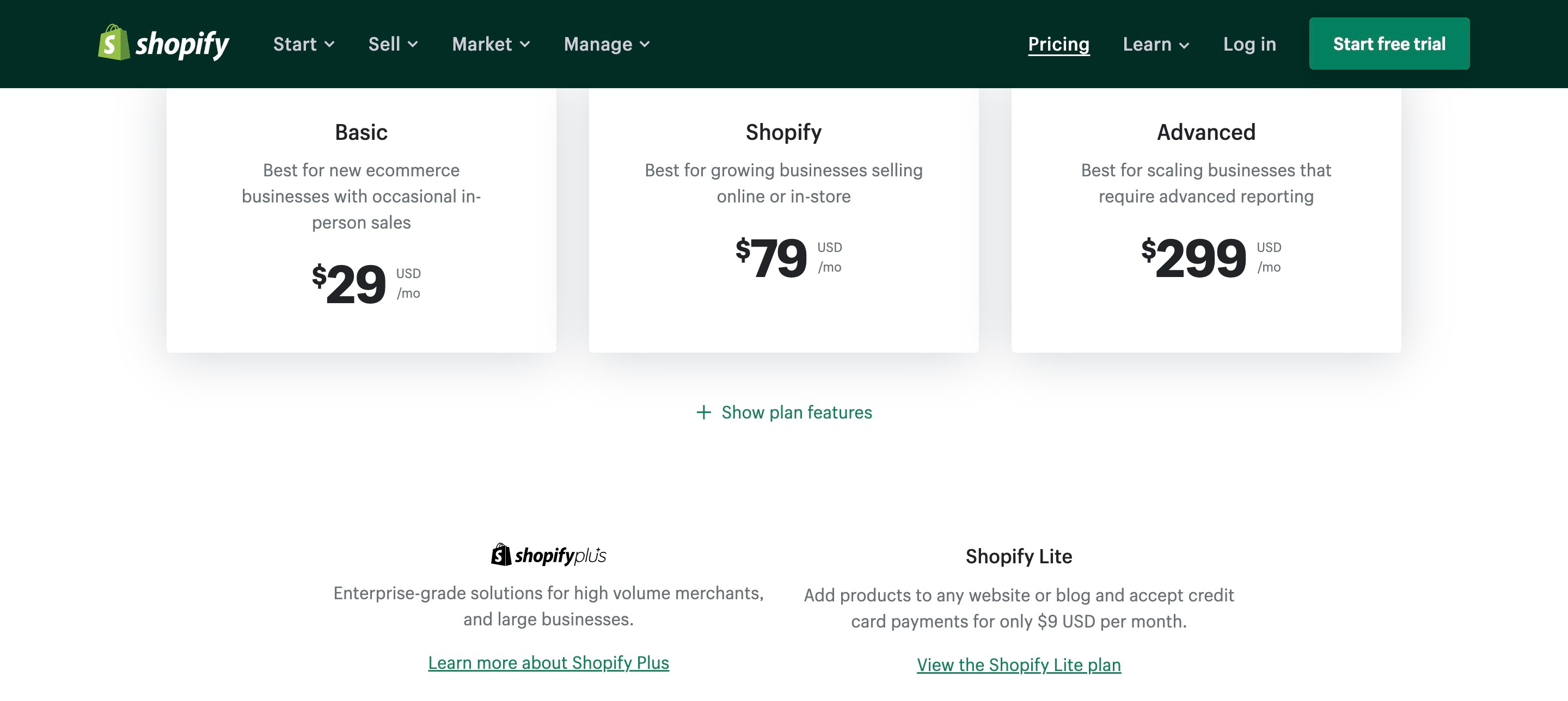
Shopify eCommerce platform offers a 14-day free trial, after which Shopify charges a monthly subscription fee. There are five plans available- Shopify lite ($19), basic Shopify ($29), Shopify plan ($79), Advanced Shopify ($299), and Shopify enterprise (starting from $2000). The ability to customize Shopify online shop is continuously expanding. unlimited goods, 24/7 customer service, the opportunity to sell on different internet marketplaces and social media platforms, manual order creation, discount codes, a free SSL certificate, and abandoned cart recovery are all features that every plan has.

Amazon charges a commission on each sale. However, selling on Amazon can be competitive as your storefront will likely be Amazon itself. So, it’s pretty difficult to stand out. Individual and Professional selling plans are available through Amazon. Individual Sellers pay charged a $0.99 fee for each product plus variable referral fees. It’s typically 10 to 15 percent of your total sale price. The cost of a professional selling plan is $39.99/month.
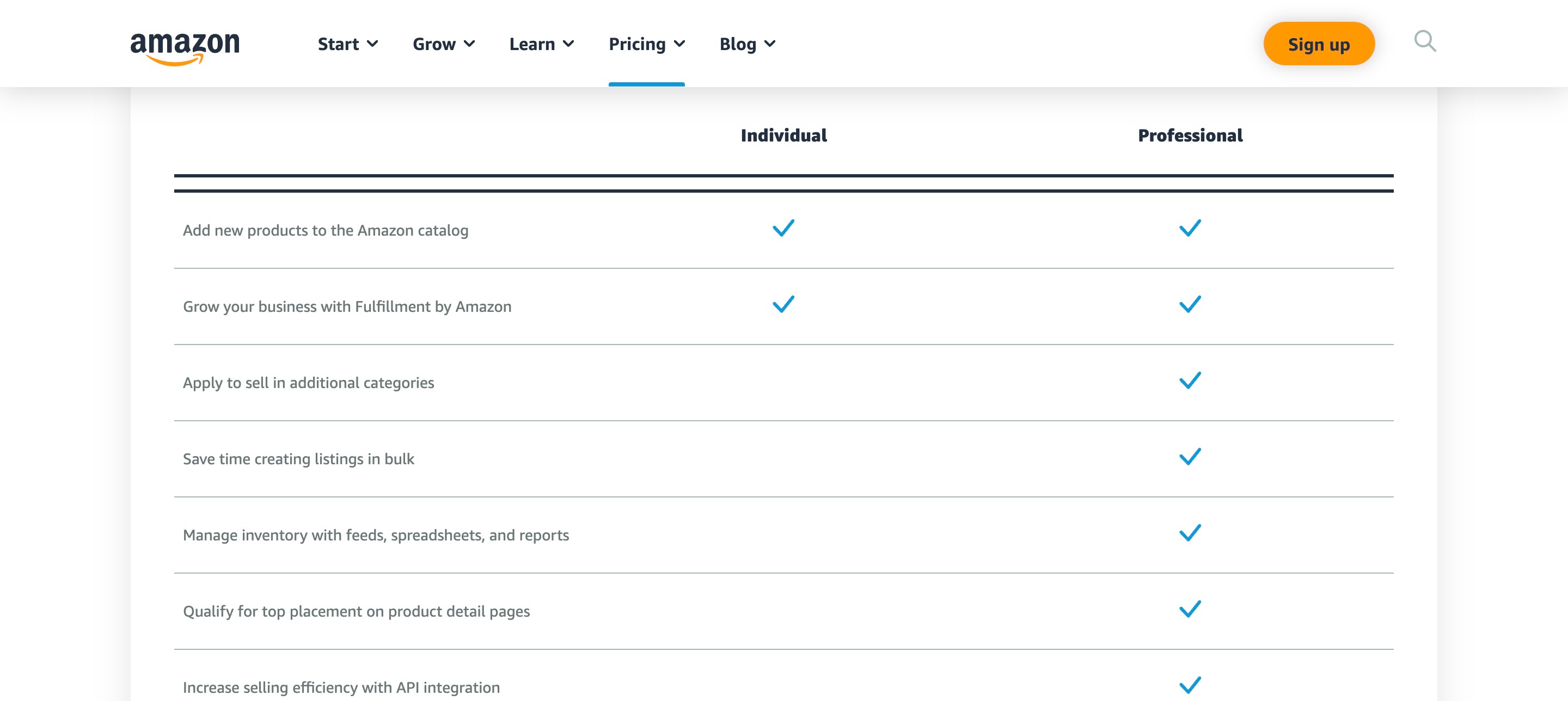
There are several costs when you utilize Amazon FBA. The fulfillment costs range from $2.41 to $137.32 (per unit), depending on the quantity and configuration of your items. There are also monthly inventory storage fees ranging from $0.69 to $2.40 per cubic foot, depending on the product store’s size and type. These fees are entirely determined by the size, quantity, and kind of goods.
While on the other hand, you don’t need to pay any selling fees to Shopify. Selling on Amazon is especially beneficial for new or small firms that do not yet have enough inventory to establish a standalone online store and develop a client base.
How do Shopify and Amazon differ in design flexibility?

Shopify offers a wide range of design options and themes customized to match your brand. Shopify also allows you to add third-party integrations such as Shopify apps. Anyone can easily customize their Shopify store without any coding knowledge.
Amazon sellers get minimal design options. The platform is designed to showcase products rather than brands. This makes it challenging to create a unique and branded experience for your customers.
What do Shopify and Amazon offer in terms of payment options?
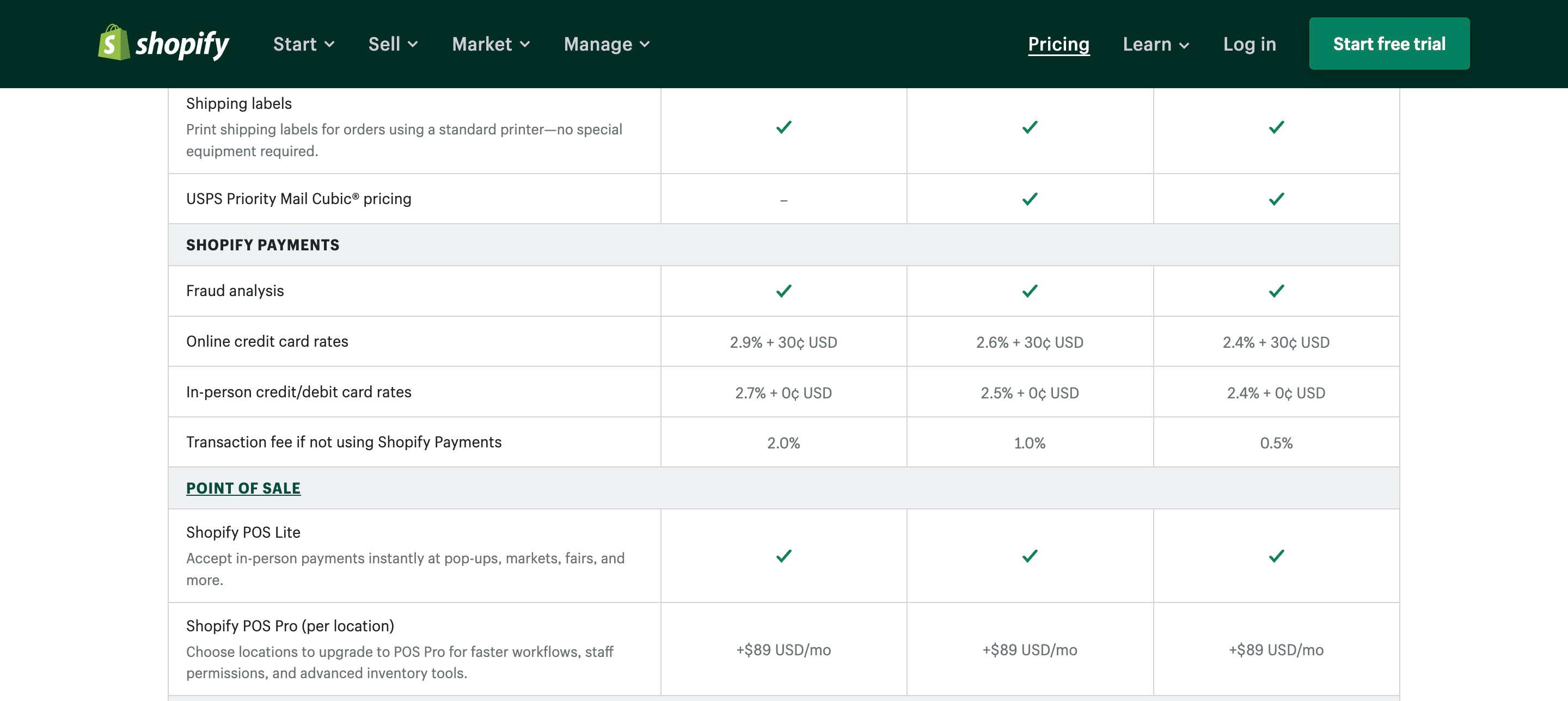
Shopify offers over 100 payment options, including Shopify Payments, Stripe, PayPal, and Apple Pay. Shopify also supports cryptocurrencies. But if you use any third-party payment gateways, you have to pay transaction fees of 2.0% for the Basic Shopify plan, 1.0% for the Shopify plan, and 0.5% for the advanced plan. Online credit card rates are for basic 2.9% + 30¢ , Shopify USD2.6% + 30¢ and advanced USD2.4% + 30¢.
Amazon only offers two payment options- Amazon pay and credit cards/debit cards. You can transfer money from your Amazon Seller Account to a checking account, or you may choose to receive payments via ACH transfers every two weeks.
Get your Shopify store now!
Shopify vs Amazon: Sales Management

Shopify provides entrepreneurs with the ability to track inventory, manage orders, and fulfill products. It also offers a wide range of sales reports that can be used to track your performance.
Amazon also provides sellers with the ability to track inventory and manage orders. However, Amazon’s sales management features are not as robust as Shopify’s.
Shopify Vs Amazon: Attracting Customers

Shopify SEO tools can be used to rank higher on search engines so that you can attract customers to your store. Also Shopify allows you to create discount codes and gift cards.
Amazon already has a massive customer base to attract customers to your products. Amazon also offers some marketing tools, such as Amazon Advertising. However, these tools are pretty expensive and may not suit small businesses.
Shopify Vs Amazon: Help and Support
You’ll get 24/7 Shopify customer support via live chat, phone, and email. Shopify eCommerce site also has a considerable knowledge base and forum where you can find answers to your questions.
The Amazon website doesn’t have the most straightforward support system out there. You can call by phone or submit a ticket through their site, but it isn’t always easy to find what you need and use these options effectively when everything is clear everywhere else!
Shopify Vs Amazon: Dropshipping Business

There’s no denying that Amazon is a powerhouse for eCommerce. But is it the best platform for dropshipping businesses? Shopify is a strong contender in this arena, and it has some advantages for a dropshipping business that Amazon doesn’t.
Shopify is a more specialized eCommerce platform for dropshipping. For starters, it’s incredibly user-friendly and easy to set up. Even if you’ve never run an online business before, you’ll be able to get your shop up and running in no time. Shopify offers a wide range of dropshipping automation apps that other platforms simply can’t match. Shopify has everything you need to run a successful dropshipping business, from built-in payment processing to real-time shipping quotes. And if you ever need help, their world-class support team is always just a click away.
Read our latest post Why Should You Buy Shopify Store for Dropshipping in 2022? and Shopify Dropshipping Business Guide: The Ultimate Solution 2022
Amazon is not suitable for dropshipping businesses as Shopify. In the dropshipping Business model, dropshipping suppliers send the products directly to the consumer on behalf of the business owner. But with Amazon, it’s not possible because retailers don’t ship directly to the consumer.
Amazon takes a commission from dropshipped sales (about 10% to 15%), which means your profit margins are lower.
Read Dropshipping in 2022: Is Shopify still a good option? (Pros and Cons)
Shopify Vs Amazon: Search Engine Optimization
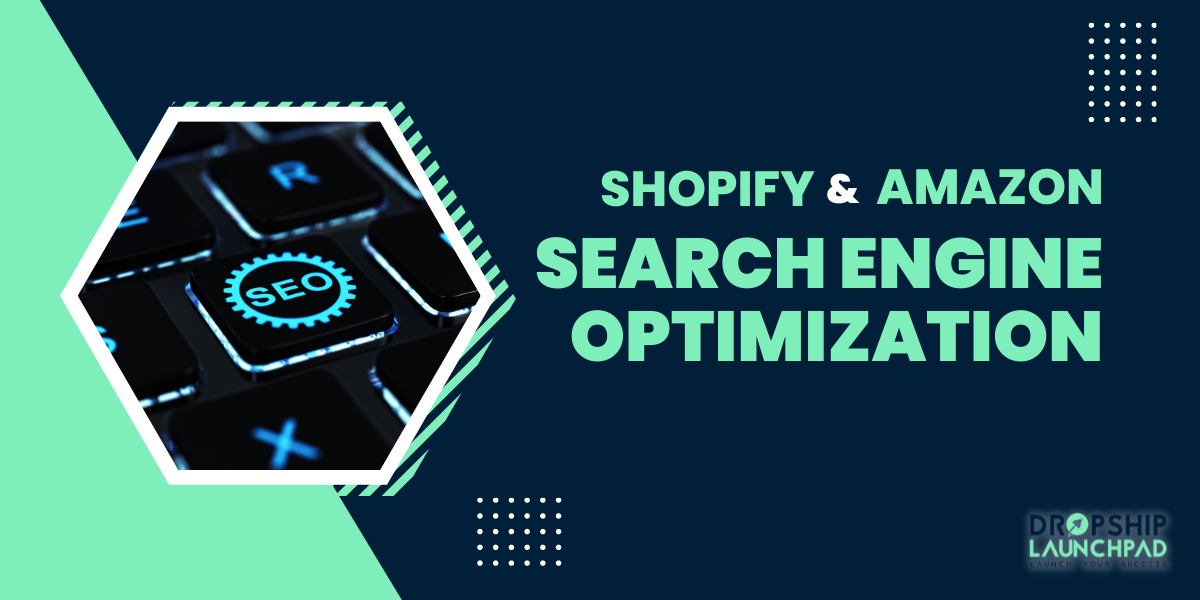
Shopify has some great features for SEO. For starters, all Shopify themes are fully responsive and mobile-friendly. This is important because Google now uses mobile-friendliness as a ranking factor. Additionally, Shopify allows you to edit your website’s title tags and meta descriptions, which can help improve your click-through rate (CTR) from SERPs. And if you need help with more advanced SEO tasks, Shopify has a built-in blog that lets you publish articles and tutorials on all things eCommerce.
Amazon also offers some features for SEO, such as creating backlinks to your product pages and optimizing your product titles and descriptions. However, these features are pretty limited compared to Shopify. And since Amazon is a marketplace, you’ll be competing with other sellers for organic traffic. This can make it challenging to rank your products high in SERPs.
Shopify Vs Amazon: POS integration

Shopify offers a wide range of POS integrations. These integrations allow you to connect your shop’s online and offline sales seamlessly. This is important for businesses that sell in brick-and-mortar stores, as it will enable you to track your inventory levels in real-time and process orders faster. Shopify also offers a built-in POS system that’s perfect for businesses just getting started.
Amazon also has POS integration known as “Amazon Go,” but Shopify’s POS features are considerably more comprehensive.
Shopify Integrations with Amazon
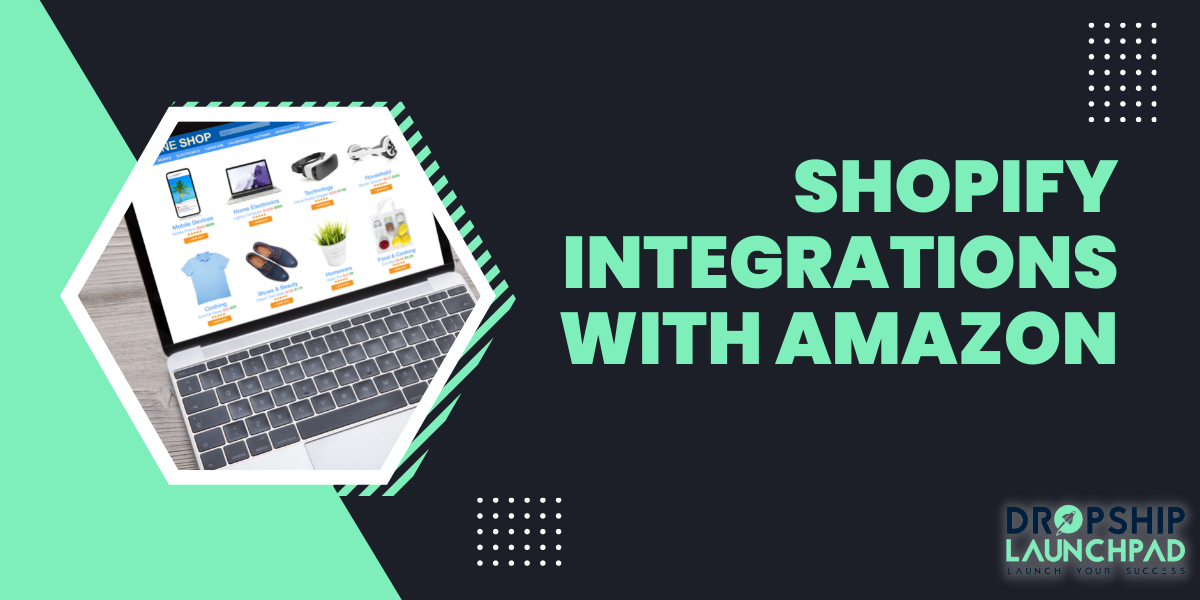
While both Amazon and Shopify are great eCommerce platforms to sell online, they’re not necessarily mutually exclusive. In fact, many businesses use both Shopify and Amazon to sell their products.
Shopify is great for building your brand and driving traffic to your website. Once you’ve built up a loyal following, you can start listing your products on Amazon. You can take advantage of Shopify’s marketing capabilities to build interest in your products and then capitalize on Amazon’s massive customer base to drive sales.
Shopify Vs Amazon: Advertising
While both Shopify and Amazon allow you to sell your products on-site, they differ in terms of advertisements. Shopify does not allow advertising or eCommerce tools on its site, whereas Amazon enables marketing space to market your own business on its network.
The growth of Shopify and Amazon over the past few years

Shopify’s decentralized strategy has made it the fastest-growing eCommerce company in recent years. Shopify generated $1.7 billion in revenue between 2015 and 2020, with an average annual growth rate of 70.2% over that period (CAGR). During the same period, Amazon’s revenue grew at an annualized rate of 29.3%.
The share price of Shopify has been climbing over the last five years, and it’s not hard to see why. The return on this investment is impressive- in fact, there was a 713% rise during that period!
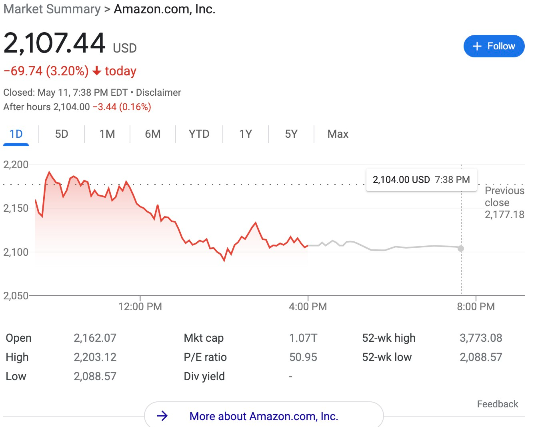
At Friday’s close in New York, the Amazon shares rose 14% to $3,152.79, their best single-day performance since 2015. That’s a significant increase on Amazon!
After the news, the stock’s market value rose by about $191 billion, putting Amazon’s market capitalization at just over $1.6 trillion.
Shopify Vs Amazon: Which one is the right eCommerce platform for your business?
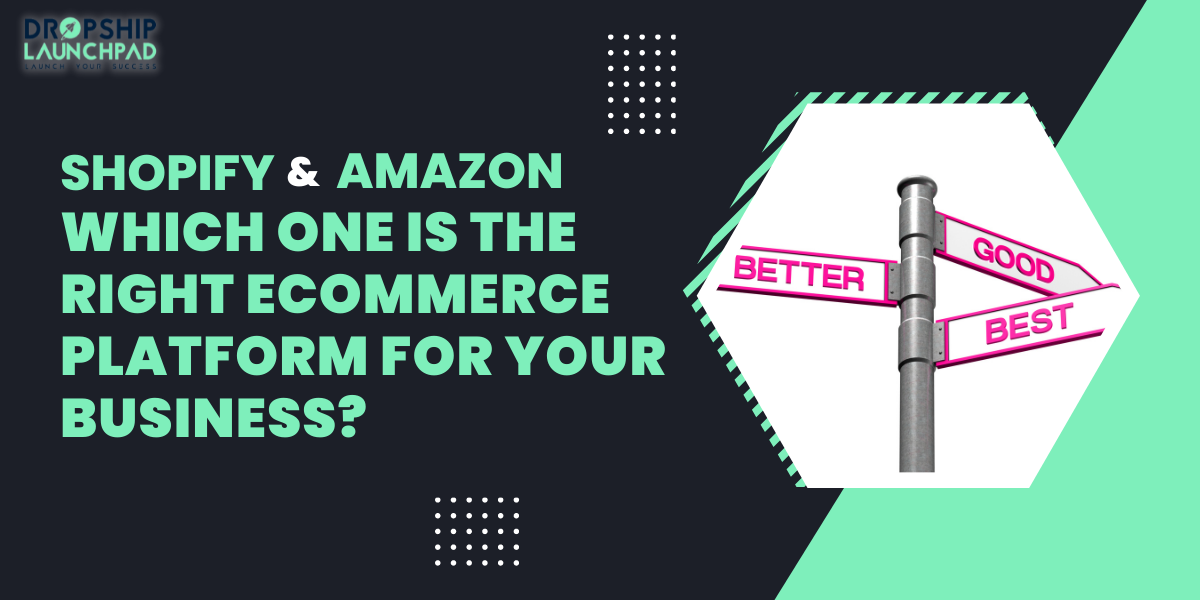
Now you know everything about Shopify vs Amazon! So, which one should you choose for your business?
Your answer depends on a few factors, such as:
- The type of products you sell
- Your budget
- Your marketing goals
- The amount of time you’re willing to devote
If you’re selling products online that are unique or require a lot of customization, Shopify is the better choice. Again you’re selling products that are already popular on Amazon, then listing them on Amazon may not be the best way to go.
If you’re on a tight budget, Amazon may be the better choice as it’s less expensive to get started. If you have little money to invest, then Shopify may be a better option as it offers more features and can scale with your business.
And also if your goal is to build a brand and drive traffic to your own website, Shopify is better. Again your goal is to reach millions of customers, then Amazon is the way to go.
It depends on what you’re selling and your goals for your business. Shopify and Amazon are both great platforms with their unique advantages. It’s crucial to weigh all the factors before deciding which platform is right for you.
Sign up for Shopify Free Trial!
FAQs About Amazon Vs Shopify

Q: Is it worth using Shopify?
Answer: If you’re an Amazon seller, you might be wondering if Shopify is the right platform for you. After all, Amazon is a powerhouse in the eCommerce world, and it has a lot to offer sellers. But is it worth it to use Shopify?
Let’s take a look at the pros and cons. First, let’s start with the pros. Shopify is a very user-friendly platform, and it’s easy to set up an online store with it.
Additionally, Shopify offers many features, such as the ability to create discounts and coupons, abandoned cart recovery emails, and product reviews.
Plus, with Shopify, you own your customer data – on Amazon, customer data belongs to Amazon. However, there are some downsides to using Shopify as well. You’ll need to pay monthly fees to use Shopify and transaction fees if you use a third party payment. Additionally, Shopify doesn’t have the same reach as Amazon.
So, it depends on your needs as a seller. If you need a platform that’s easy to use and offers many features, Shopify is a good option. However, if you’re looking for a platform with more reach, Amazon is probably a better choice.
Q: How is Amazon and Shopify different?
Answer: Shopify is an excellent tool for building your own online store, while Amazon allows you to sell alongside other sellers on its marketplace.
You can do your branding on Shopify, which is not possible on Amazon. For dropshipping business, Shopify offers more features than Amazon.
Q: Why do people use Shopify instead of Amazon?
Answer: Shopify is a better platform for businesses because it offers more features and customization options.
Shopify is a good option for businesses that want to create their own online store. It offers a wide range of features and customization options, so businesses can create a website that looks and functions the way they want. It’s also cheaper than Amazon, making it a more affordable option for small businesses. And finally, people without any technical experience can create a professional-looking online store.
Q: How much does the average seller make on Shopify?
Answer: The amount of money that sellers make on Shopify varies depending on the size and scope of their businesses.
Some Shopify businesses make a lot of money, while others make only a little. However, The average revenue per client for Shopify stores is about $72. You belong to the top 20% of Shopify businesses if your online store’s earnings exceed $149 per customer.
The income of your store can be higher or lower depending on the type of products you sell and how well your Shopify store is set up.
Can you sell products from Shopify on Amazon?
Answer: Yes, you can sell products from Shopify on Amazon. Here are a few things to keep in mind:
You’ll need to create a new “listing” for each product you sell on Amazon. Listings include the product name, price, pictures, description, and other relevant information.
You can use Shopify’s “Info captain” app to transfer your product information to Amazon easily.
Fulfillment by Amazon is Amazon’s own fulfillment option for sellers. With FBA, Amazon will pick, pack, and ship your products for you. It is a good option if you want to outsource fulfillment, but it will slightly increase your costs.
Shopify Vs Amazon: Our final thought
So, what’s the verdict? Who will win the eCommerce war in 2022? It’s hard to say for sure. But one thing is that – if you want to stay competitive in this market, you need to be on Shopify.
However, if you are looking to scale quickly, have a large selection of products, or want to take advantage of Amazon’s massive customer base, then It is the better platform for you.
No matter which platform you choose, both Shopify and Amazon offer a great opportunity for businesses to grow and succeed in the world of eCommerce. So what are you waiting for?
What do you think? Shopify vs Amazon- which is better for eCommerce in 2022? Let us know in the comments below! Thanks for reading
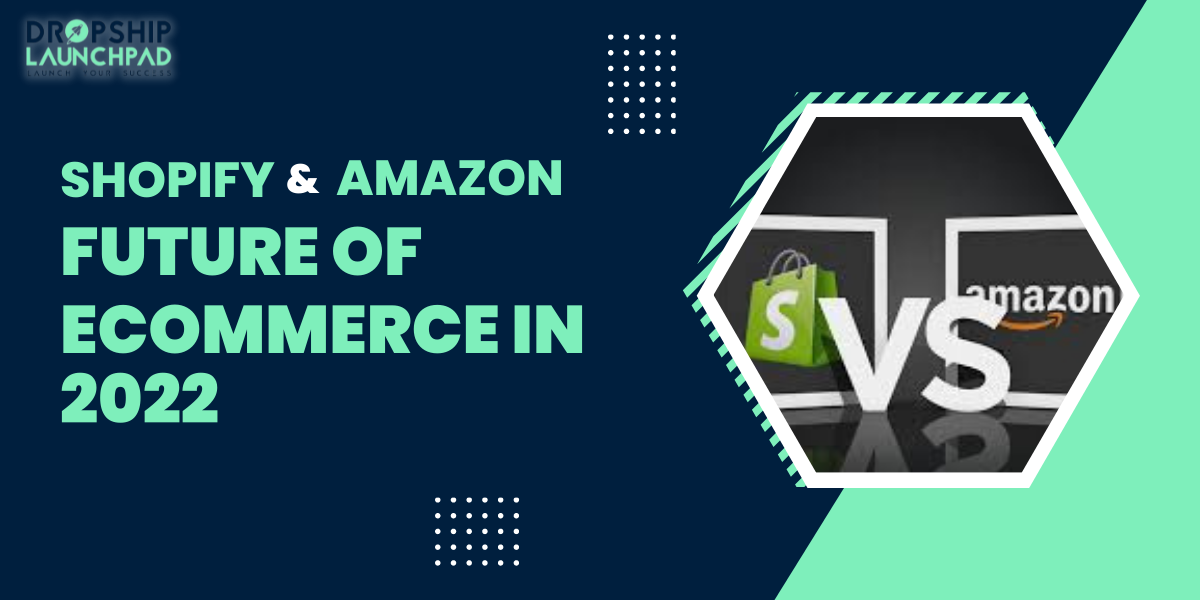
 Shopify vs Shopify Plus: Which Is Best in 2023?
Shopify vs Shopify Plus: Which Is Best in 2023?  Shopify vs GoDaddy: The Ultimate Comparison for 2022
Shopify vs GoDaddy: The Ultimate Comparison for 2022 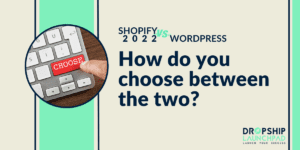 Shopify vs WordPress 2022: How do you choose between the two?
Shopify vs WordPress 2022: How do you choose between the two?  Shopify vs WooCommerce: Which Platform Will Rule in 2022
Shopify vs WooCommerce: Which Platform Will Rule in 2022